September 3, 2010
Flamsteed annual picnic & Altazimuth tours
The Society returned to familiar territory for its annual picnic gathering held on September 3rd. Around 20 people came along to the Astronomer’s Garden behind the Observatory for a very congenial chat over sandwiches, nibbles, and the odd glass of favourite tipple. It was also a chance to meet the newest member, the new little Dear — all congrats to Gaby & Mike D (the younger). Although it was dry and warm, the weather failed to cooperate sufficiently to warrant an outing for the Coronado solar telescope.
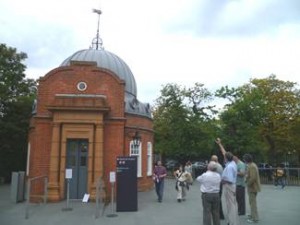 |
Never one to miss an opportunity to listen to his own voice, Mike D (the elder) conducted short (?) visits to the Altazimuth Pavilion for a talk about its history and to discuss the present telescopic occupants. Nearly 30 members participated in this latest piece of sleep-deprivation research. For a summary of Mike’s Altazimuth talk please read on.
The Altazimuth Pavilion at Greenwich formed part of William Christie’s 1890s extensions to the Observatory. The largest addition was the South Building, originally known as the ’New Physical Laboratory’ and built to house departments using spectroscopy and photography. The building work continued throughout the decade and the ‘Altaz’ Pavilion was completed near the end, opening in 1896. An Admiralty engineer/architect, William Crisp, was responsible for the design which echoes the Germano-Italianate style of the ‘Albertville’ buildings in South Kensington. The Pavilion has maritime styling hints — portholes etc — although perhaps more Jules Verne than QM2. It is crowned by a weather-vane representing Halley’s Comet as portrayed on the Bayeux Tapestry and forging a link to the legendary second Astronomer Royal.
Christie commissioned the Pavilion to house a newaltazimuth telescope which could be used for precise positional astronomy measurements at many points of the compass around the horizon — that is, in ‘azimuth’ (horizontal direction), as well as ‘altitude’ (vertical elevation), hence ‘altazimuth’.
Its predecessor, Airy’s altazimuth was designed by the formidable 8th Astronomer Royal, George Airy, and used from 1847. It was mounted in a drum-shaped dome built above the site of Flamsteed’s observatory, at the west end of the present Meridian Building. It served 50 years but needed to be replaced by Christie. The meridian quadrants and transit telescopes now on display in the Meridian Building could only be used when the target object was on the meridian, exactly north or south, and no measurement was possible if weather or moon phase obscured the target. The altazimuths could take measurements at many points of the compass around the horizon and so could get readings when the meridian instruments could not.
Christie’s altazimuth (8-inch aperture) was used from 1896 until 1940 when it was worn-out and broken up. Apparently it was not as successful as Airy’s instrument — “It was never a success” (Howes). However, among its achievements were observations of Halley’s Comet during the 1910 apparition, and parallax measurements of the asteroid Eros on its close approach to Earth in 1929. The 1929 measurements helped determine a more precise distance to Eros and refined the value for the astronomical unit (A.U.), the distance from the Earth to the Sun, a fundamental astronomical yardstick.
The Altaz Pavilion stood empty through the war and in fact until 1963 when it was used to house the Sheepshanks Equatorial Telescope. By then the Observatory was a museum, part of the NMM. The Sheepshanks object glass of 6.7-inches aperture had been presented to the Observatory in 1838 by the Rev. R. Sheepshanks FRS, Secretary of the Astronomical Society. The mounting was built by Grubbs (later to be taken over and become Grubb-Parsons) and the telescope was used in two or three locations around the Observatory before it was reconditioned in 1952. It was removed from the Altaz in the 1980s and is now in the ROG’s store.
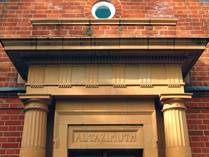 |
The two telescopes we now see in the Altaz Pavilion have no connection with the building’s original purpose. They are mounted together on a single equatorial mounting, not an altazimuth.
In the position pictured, the upper telescope is a 6¼ inch refractor built by Cooke in 1888. It was presented to the Observatory in 1947 by the amateur astronomer A. M. Newbigin, after which it was used at the new home of the Royal Greenwich Observatory, Herstmonceux.
The lower telescope in the picture is a photoheliograph (a telescope designed specifically for photographing the Sun — in white light; it’s not an H-alpha). Five instruments including this one, were built by T. R. Dallmeyer for the expeditions to observe the Transits of Venus in 1874 and 1882 and all were erected and tested at Greenwich. Two Dallmeyers (Nos. 2 & 3) were among the instruments used at Greenwich for daily observation of the Sun to build-up a unique record of sunspot activity. No. 2 was used at Greenwich from 1911 then throughout the wars, until in 1949 it was transferred to Herstmonceux and co-mounted with the Newbigin refractor in the configuration we see now. The co-mounted telescopes were used by the Solar Department of the RGO.
In the 1980s the two telescopes and their mounting were transferred to Greenwich and erected in the Altaz Pavilion where they are now. The Dallmeyer Photoheliograph has been restored by Peter Thomas of the Mill Hill Observatory, University of London. The system is in working order and it may be possible to bring them into use for solar viewing in due course. Their connection with the RGO’s solar department prompted the display panels about the Sun which are mounted on the ground floor of the Pavilion.
Read More at —
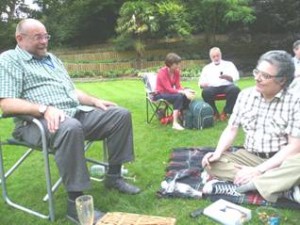
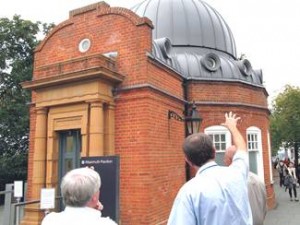
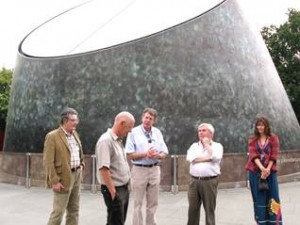
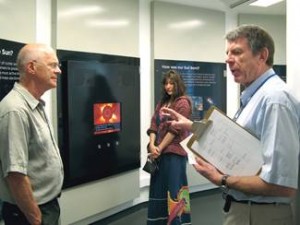
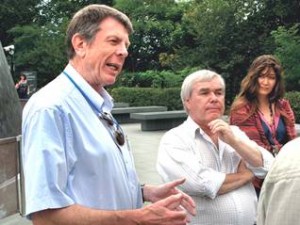
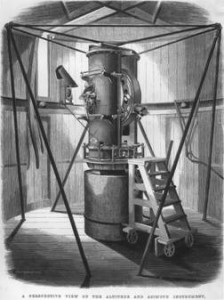
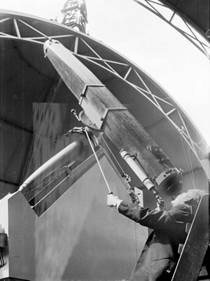
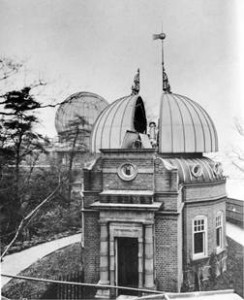
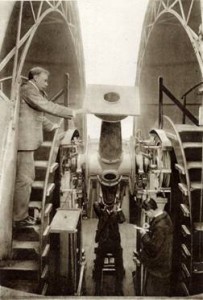
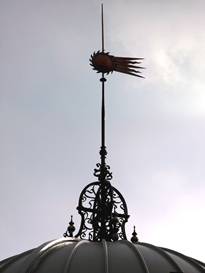
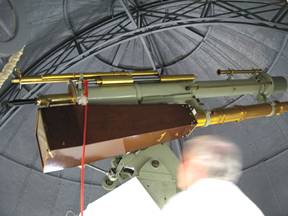
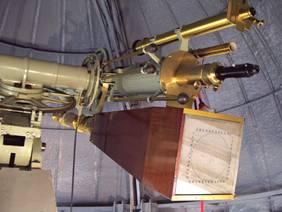







You must be logged in to post a comment.